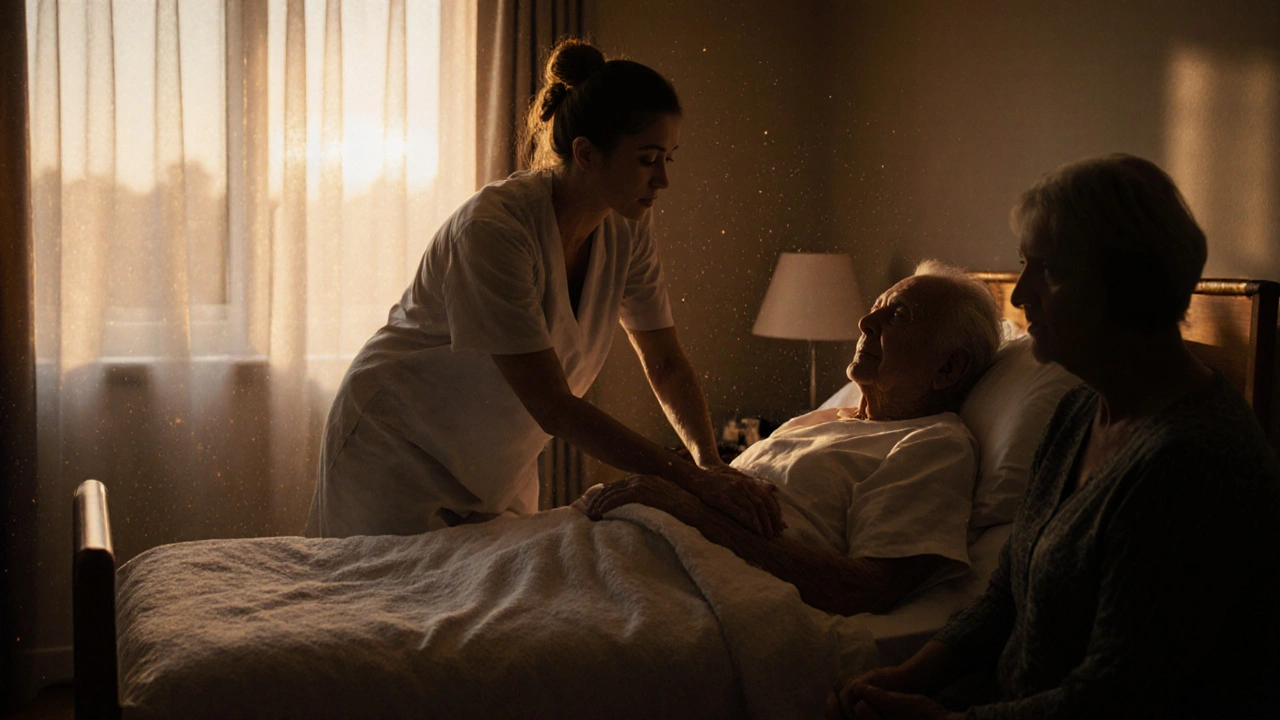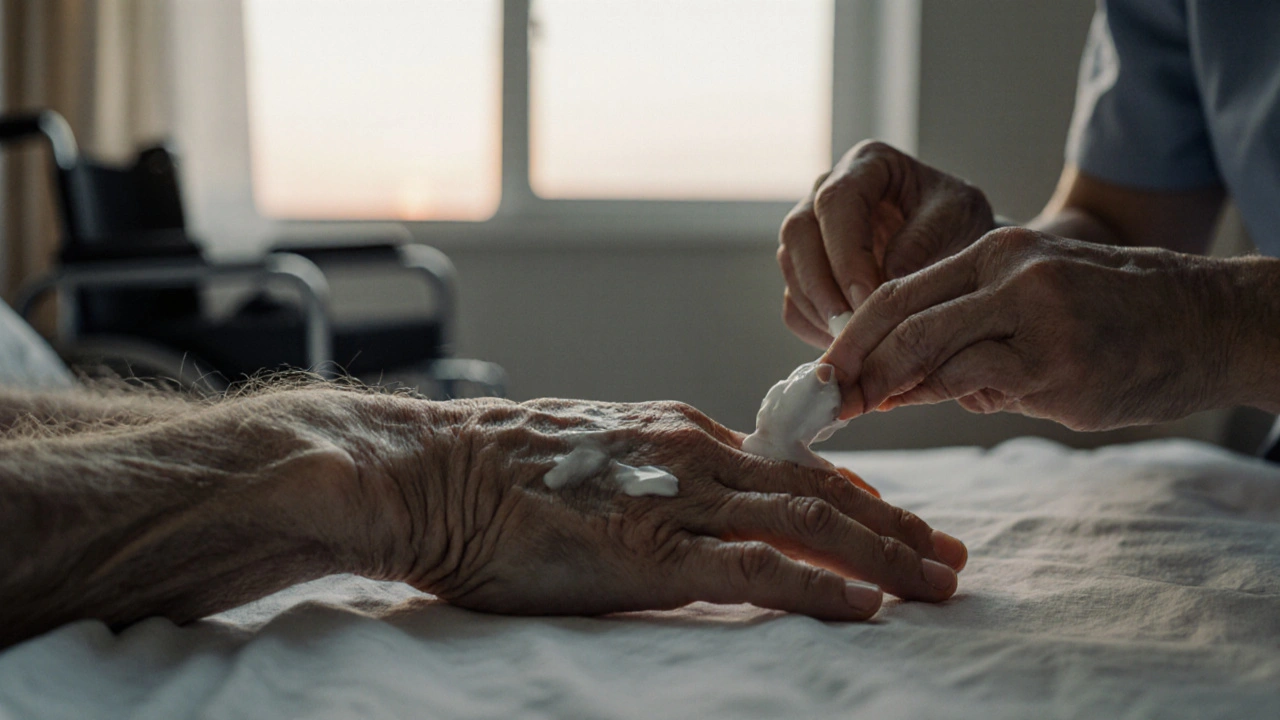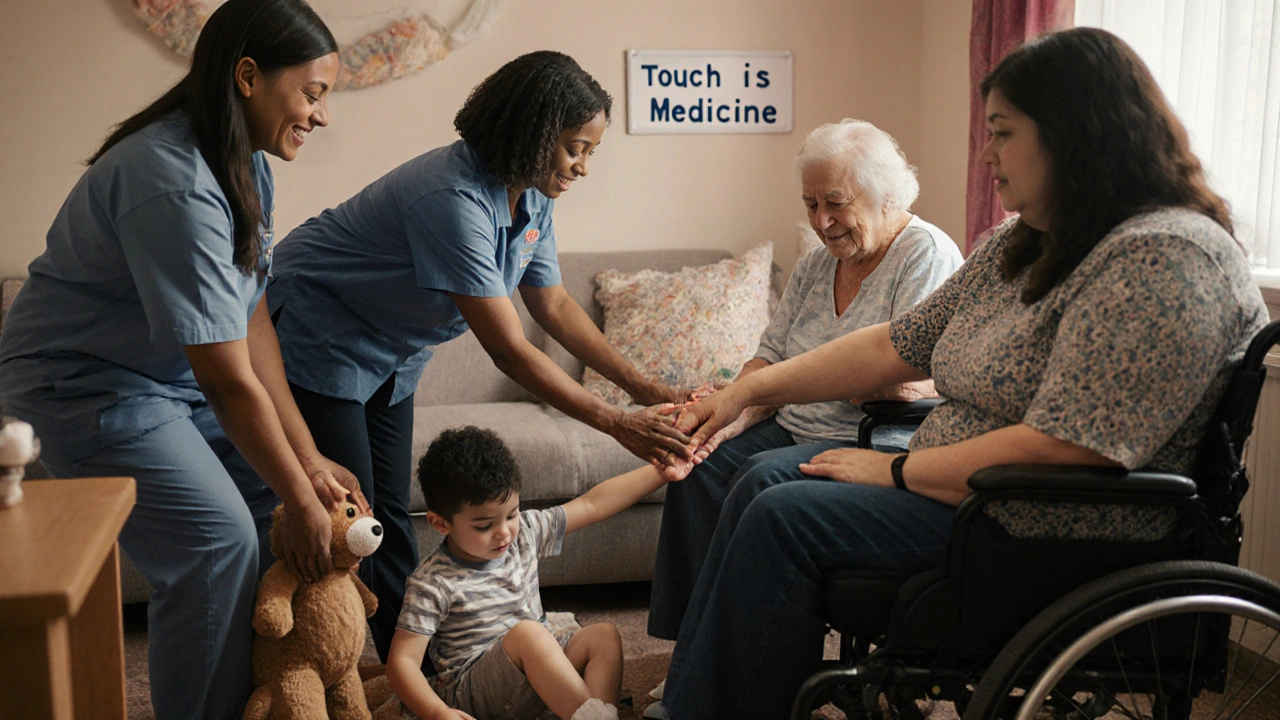The Role of Palliative Massage in Modern Healthcare
 Nov, 15 2025
Nov, 15 2025
Comfort Touch Duration Calculator
Personalize Comfort Touch Session
Recommended Comfort Touch Session
When someone is facing a serious illness, the goal shifts from curing to caring. Pain, anxiety, nausea, and fatigue don’t disappear just because treatment stops. That’s where palliative massage steps in-not as a cure, but as a quiet, powerful way to restore dignity and comfort when it’s needed most.
What Is Palliative Massage?
Palliative massage isn’t a deep tissue session or a luxury spa treatment. It’s gentle, intentional touch designed for people with advanced illness-cancer, heart failure, dementia, or end-stage organ disease. The pressure is light, the movements slow, and the focus is on calming the nervous system, not fixing anything.
Unlike regular massage therapy, which might target muscle knots or improve mobility, palliative massage works with the body’s stress response. A 2023 study in the Journal of Palliative Medicine found that patients receiving twice-weekly 20-minute sessions reported a 40% reduction in perceived pain and a 35% drop in anxiety levels within just two weeks. The effects were measurable even in patients who couldn’t speak or were sedated.
It’s not about technique perfection. It’s about presence. A therapist’s hands, warm and steady, can signal safety when the world feels chaotic. For many, it’s the first time in weeks they’ve been touched without pain, needles, or machines involved.
How It Works: Science Behind the Touch
The body responds to gentle touch in predictable ways. Light pressure activates C-tactile fibers-special nerves in the skin that send signals to the brain’s emotional centers, not the pain pathways. This triggers the release of oxytocin and serotonin, the body’s natural calming chemicals. At the same time, cortisol, the stress hormone, drops.
For someone with cancer, this means less nausea. For someone with COPD, it means easier breathing. For someone with dementia, it can mean moments of clarity or peace where words fail.
One hospice nurse in Manchester shared how a patient who hadn’t spoken in days whispered, “I feel like I’m home,” after a 15-minute hand massage. That’s not magic. That’s neurobiology.
Palliative massage doesn’t interfere with medications. It doesn’t cause side effects. It can even reduce the need for opioids in some cases. A 2022 trial at the Royal Liverpool Hospital showed patients who received regular massage required 22% less morphine over a 10-day period compared to those who didn’t.
Who Benefits Most?
Palliative massage isn’t limited to one diagnosis. It helps anyone in advanced illness who’s experiencing:
- Chronic pain that doesn’t respond well to drugs
- Severe anxiety or depression
- Difficulty sleeping due to discomfort
- Nausea or constipation from medications
- Feelings of isolation or loss of control
It’s especially valuable for older adults, children with life-limiting conditions, and those in hospice care. But it’s not just for the patient. Family members often feel helpless. Watching someone receive gentle touch can be healing for them too. Many hospices now offer short sessions for caregivers-just 10 minutes of hand massage-to help them reset and breathe.
I’ve seen a wife sit beside her husband during a session, holding his other hand, crying softly-not from sadness, but relief. She finally felt like she could do something real.

How It’s Done: Techniques and Settings
Palliative massage is adapted to the person’s condition. If someone is bedbound, it’s done over sheets. If they’re in a wheelchair, it’s focused on hands, arms, shoulders, and feet. The room is quiet, dim, warm. Music is optional-sometimes silence is the best sound.
Common techniques include:
- Effleurage: Long, gliding strokes with light pressure
- Hand and foot holding: Simple, sustained contact
- Scalp massage: Especially soothing for those with headaches or fatigue
- Reiki-inspired touch: No movement, just still hands on key areas
Therapists avoid deep pressure, joint manipulation, or areas with open wounds, bruises, or recent radiation sites. The goal isn’t to move tissue-it’s to move the spirit.
Most sessions last between 15 and 30 minutes. Longer isn’t better. Too much stimulation can overwhelm a fragile system.
Accessing Palliative Massage: Where to Find It
Palliative massage isn’t widely available everywhere-but it’s growing. In the UK, over 60 hospices now offer it as a standard service. In Liverpool, the Marie Curie hospice has trained 12 volunteer therapists who work alongside nurses and doctors.
If you’re looking for it:
- Ask your hospice or palliative care team
- Check with local cancer support centers
- Contact organizations like the Society for Oncology Massage or the Complementary Therapies in Palliative Care Network
Many services are free or donation-based. Insurance rarely covers it, but most programs don’t turn anyone away for lack of funds.
Some families hire private therapists trained in palliative care. Look for credentials like CPM (Certified Palliative Massage Therapist) or training from the International Association for Hospice and Palliative Care.

Why It’s Still Underused
Despite the evidence, palliative massage is still seen as “nice to have,” not essential. Some clinicians still think touch is “fluffy” or “unscientific.” But that’s changing.
One reason it’s overlooked? Training. Most massage therapists aren’t taught how to work with dying patients. And most doctors aren’t trained to refer to it. There’s a gap between what helps and what gets talked about.
But patients know. Families know. Nurses know. When someone smiles for the first time in days because their feet were massaged, you don’t need a study to prove it matters.
What Families Can Do
You don’t need to be a therapist to offer comfort. Simple touch can make a difference.
Try this:
- Hold a hand for five minutes without talking
- Apply unscented lotion with slow, gentle strokes on the arms or legs
- Brush hair softly from forehead to back of head
- Place a warm (not hot) cloth on the feet
Don’t worry about doing it “right.” Your presence is the therapy. The rhythm of your breath, the warmth of your skin-these are the things that linger.
More Than a Treatment
Palliative massage doesn’t extend life. But it makes life more bearable in the time left. It reminds people they’re still human-still worthy of tenderness, still connected, still loved.
In a world that often treats illness like a problem to be solved, palliative massage says something different: You don’t have to fix this. Just be here.
That’s not just therapy. That’s humanity.
Is palliative massage safe for people with cancer?
Yes, when done correctly. Trained therapists avoid areas with tumors, recent surgery sites, or radiation burns. Pressure is always light and adapted to the person’s condition. It doesn’t spread cancer-this is a myth. The goal is comfort, not physical change.
Can palliative massage help with nausea?
Yes. Gentle abdominal stroking and hand massage have been shown to reduce nausea in cancer patients. One study found that 72% of participants reported less nausea after a 20-minute session, even if they were on anti-nausea drugs.
Do you need special training to give palliative massage?
You don’t need certification to offer simple comfort touch, like holding a hand or applying lotion. But for professional services, therapists should have training in palliative care-covering anatomy changes, medication interactions, and emotional boundaries. Look for programs certified by the Society for Oncology Massage or similar organizations.
Is palliative massage only for the dying?
No. Palliative care begins at diagnosis, not at the end. People with chronic illness, long-term pain, or severe side effects from treatment can benefit. It’s about quality of life, not proximity to death.
Can children receive palliative massage?
Yes. Pediatric palliative massage is gentle and often playful. It helps with pain, anxiety, and sleep. Therapists use toys, stories, or music to make it feel safe. Many children’s hospices in the UK now include it as part of standard care.
How often should someone get palliative massage?
There’s no fixed rule. Some benefit from daily 10-minute sessions; others prefer once a week. The key is consistency. Even one session can reset a person’s stress response. Many families find that regular touch-daily or every other day-creates a calming rhythm.
For those navigating illness, the most powerful medicine isn’t always in a pill. Sometimes, it’s the quiet warmth of a hand, held just long enough to say: I’m here. You’re not alone.
